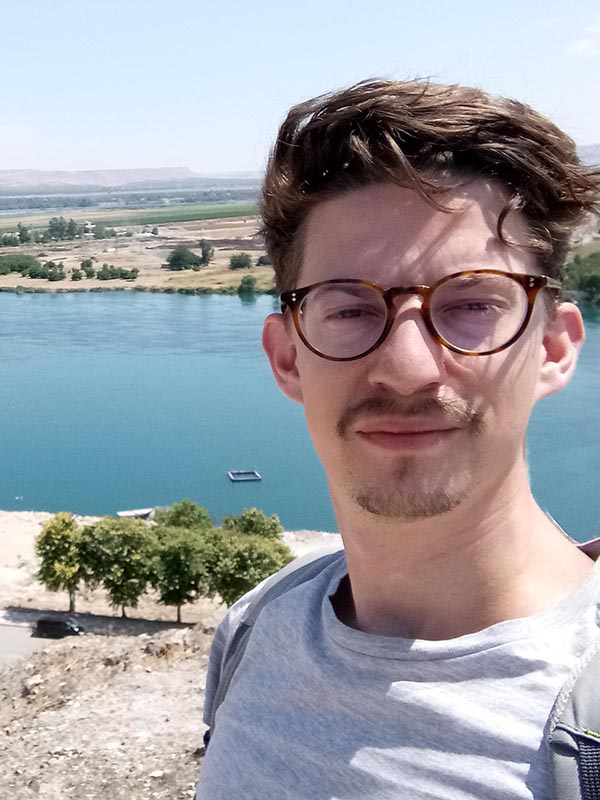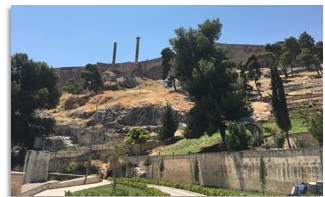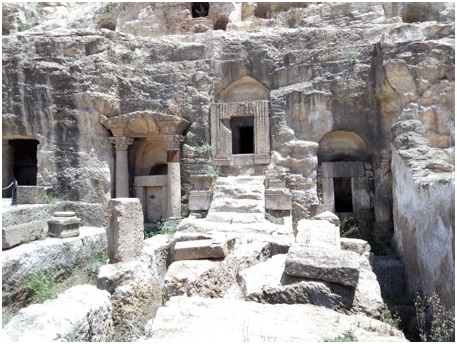
Dr. Brelaud 2018 yılında Paris Sorbonne’dan Eskiçağ Tarihi alanında doktora derecesi almıştır. University of California, Berkeley Yakın Doğu Çalışmaları Bölümü’nde Avimalek Betyousef Misafir Yardımcı Doçenti olarak görev yapmıştır. Dr. Brelaud, ağırlıklı olarak Süryanice ve Arapça yazılı kaynaklara dayanarak, İslamiyet öncesi Roma ve Sasani Mezopotamyası’ndaki (üçüncü–yedinci yüzyıllar) Hristiyanların sosyal ve coğrafi hareketlilikleriyle ilgilenmektedir.
Türkiye’den çeşitli arkeolog ve akademisyenlerle iş birliği içinde Türkiye’deki Süryanice yazıtları toplama projesinde yer almaktadır. ANAMED’deki araştırmaları, Antik Çağ ve Geç Antik Çağ’da (MS birinci–sekizinci yüzyıllar) Edessa (Şanlıurfa) bölgesindeki ölü gömme uygulamalarının Süryanice yazıtlar üzerinden incelenmesine odaklanmaktadır.
My time at ANAMED gave me the opportunity to work from Istanbul on the epigraphic material from Edessa, a town long on the fringes of the Eastern Roman Empire and now on the border of the Turkish Republic in Şanlıurfa. As a historian and epigraphist, I specialize in the post-Christian history of ancient Mesopotamia. I am particularly interested in the populations living in the region between the Euphrates and Tigris Rivers, which was ruled by the Persians (Parthians and Sassanids) and the Romans. I defended my PhD in 2018 on the Christians of the Sasanian Empire and am now extending the scope of my study to the history of Christians living on either side of the Roman-Persian border, which is today southeastern Türkiye, eastern Syria, and western Iraq. My research is based mainly on Syriac and Arabic literary sources, as well as on archaeological and epigraphic data gathered through my participation in various field programs in Iraq and Türkiye, with comparisons with Jordan for another example of the eastern edge of the Roman Empire).

Fig. 1. Map of Türkiye, with Şanlıurfa highlighted in the red square and Ṭur ʿAbdin in the red broken-line cercle (S. Brelaud)
Research project
The project I worked on at ANAMED was entitled “Funerary Practices in and around Edessa: the Contribution of Syriac Inscriptions (First–Eighth centuries CE).” Edessa is the ancient name of the city now known as Şanlıurfa, in southeastern Türkiye. Şanlıurfa is probably most famous for its important Muslim pilgrimage site around the birthplace of the Prophet Abraham and for the stunning discoveries at the Neolithic site of Göbekli Tepe. Less well known to the large audience is the fact that Edessa (Urhay in Aramaic) was the cradle of an Aramaic dialect—the Edessan Aramaic later known as Syriac—that is still in use throughout the world as the liturgical language of various Syriac Churches.

Fig. 2. The citadel of Urfa (view from the north), with the necropolis of Kale Eteği on the right (photo S. Brelaud, 2019).
Archaeologists from the provinces of Gaziantep, Şanlıurfa, and Mardin have made recent major discoveries in this region, among them Syriac inscriptions found on mosaics or stone. During the last 30 years, more than 20 new Syriac inscriptions, from Polytheist and Christian contexts, have been discovered in tombs or burial sites in these three provinces; others have been found on church ruins.
As they are dated to the Antique and Late Antique period, these inscriptions allow us to study the transition of the Edessan Aramaic dialect from the status of a local language to that of an Aramaic-speaking Christian language. They are often funerary documents in the Upper Mesopotamian context: we can mention the famous mosaics with family portraits, a feature found only in Edessa and its surroundings. At the time, Syriac (Christian) epigraphy was mainly made up of church dedications and commemorative texts of restoration or construction and, to a lesser extent, of funerary inscriptions.

Fig. 3. The necropolis of Kızılkuyun in Urfa on the western slope of the Old City (photo S. Brelaud, 2019).
The first interest of newly-discovered Edessan Aramaic documents is that they enable the study of societies contemporary with the beginning of Christianity in this area. The second major contribution is that they can highlight the evolution of funerary practices and continuities and changes from the Pagan period to Christian times.
My research project at ANAMED aimed at assessing the value of the latest epigraphic discoveries for the understanding of the Christianization of this region during Antiquity and Late Antiquity through the particular study of funerary inscriptions from the first to the eighth century CE.
My research aimed to gather and study the documentation that enables us to better understand the funerary practices of the sites where these inscriptions were found in southeastern Turkey. Published Syriac inscriptions, as well as those in the process of being published by Turkish colleagues from the provinces of Gaziantep, Şanlıurfa, and Mardin, have been the first basic sources of my work. I compared Syriac epigraphic documentation with contemporary inscriptions written in other languages and published in different corpora: other Aramaic dialects for the Roman period (Palmyrene and Hatraean) and Greek, but also Arabic for the early Islamic period. I also had to rely on the broader regional archaeological record and, more generally, on studies of funerary practices that have been carried out at various Anatolian sites.
I analyzed the evolution of the forms from the Edessan (or Roman-rule) period up to the Islamic period: indeed, we observe both continuities in the vocabulary (such as the use of the word bet ‘alma for “the tomb,” which disappears very gradually after the Christianization of the region) and changes (with the appearance of the Christian formula “whoever reads this, let him pray for me”). There is then the categories of funerary inscriptions that can be identified: personal or collective tombs, pagan or Christian text, etc. The content of the text allows for a prosopographical and onomastic study based on the lists of names found in the inscriptions. Finally, I was also interested in the evolution of the graphic aspect of the inscriptions: the chosen medium (mosaic, stone, rock wall, sarcophagus, or painting), the calligraphy, and the relationship of the text with the iconography around the inscription.
On the other hand, my aim was to place this epigraphic documentation in its historical context by comparing the material evidence with the literary sources in Syriac and Greek when dealing with this part of the Roman Empire—Osrhoene (i.e., the region of Edessa) in Antiquity and Late Antiquity. They can be apocrypha accounts of the history of early Christianity in this area, such as the Teaching of Adday, historiographic texts such as the Ecclesiastical history of John of Ephesus, or hagiographic texts on the life of the ascetics who populated the region from the fourth century CE. Regarding the study of the Christian milieu of Edessa in the Roman period (second–third century CE), I could also rely on the ongoing work by John Healey (Manchester University).
It is therefore a study of the context of Syriac funerary inscriptions over a long period. It should add to the social history of funerary practices in defining the environments in which these inscriptions were produced, the people who sponsored the tombs, and the discussion of the turbulent context in which these deaths took place (particularly wars and epidemics).
The outcomes and products that this research stay at ANAMED achieve are multiple. First, I could gather scientific documentation on funerary practices in order to complete the future studies that I will be conducting with Turkish archaeologists and historians, especially from the provinces of Şanlıurfa, Gaziantep, and Mardin. The stay in Istanbul helped me to achieve the study of inscriptions that will be published together with Turkish colleagues responsible for these epigraphic discoveries. It helped me by providing the necessary framework to carry out this work in the best possible way.

